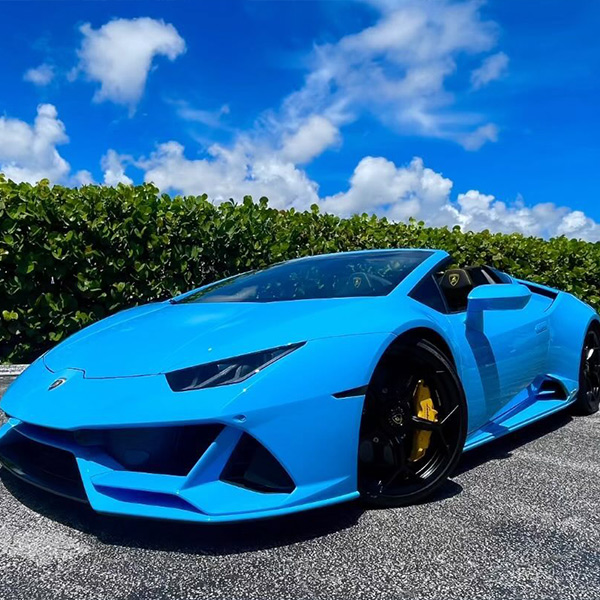
How Long Does Window Tinting Take?
How Long Does Window Tinting Take?
Window tinting is one of many cost-effective ways to customize your car without going overboard on decorations. Not only can tinting windows allow you to add a personalized touch to your car, but it also offers several practical benefits.
Before you look for a car window tinting service near you, you should know that getting your windows tinted can take a bit of time. As such, you would need to plan your schedule accordingly to avoid hampering other plans or missing obligations.
But how long does window tinting actually take? In this article, we’re going to take a look at window tinting as a whole to give you a better understanding of how it’s done and why it takes a long while to finish.
The Window Tinting Process
The process of window tinting can take anywhere between 30 minutes to 4 hours. Depending on their size, each window can take 30 to 45 minutes to tint. Tinting all the windows in a normal-sized sedan can take up to two hours, while the process for larger vehicles would take longer than that.
Tinting windows is more than just placing film on a windshield. Professional window tinting involves measured steps to ensure the entire process is flawless.
First, both sides of a window are cleaned to make sure that the tinted film makes direct contact with the glass surface. Then, the film is cut to perfectly match the measurements of your window. Once its cut to the right size, it is carefully pressed onto the window’s surface and flattened to remove wrinkles and air pockets. After this, the installer moves on to the next window to repeat the process.
It would be best to hire professionals for car window tinting less than professional-level work can leave you with bad fitting tints or wrinkles on your windows.
The Curing Phase
Newly-applied tint needs time to dry. After the tinting process, it would take up to three more days before the tint settles onto your windows. This is called the curing phase.
During this phase, you should avoid doing anything that might ruin the tint on your windows. This means, no car washing and no rolling down of windows. These activities can weaken the adhesives on tinted films, which could cause them to fall off.
Bubbles may also form between the film and the window surface. This is a completely normal occurrence, and it will go away in time, so don’t panic.
You’ll be able to use your vehicle normally during the curing phase, but do take extra caution so as not to disrupt the curing phase.
Curing duration may also be affected by the climate. Spring and Fall seasons are the most ideal times to have your windows tinted because of the warm weather. Tinted windows would dry the fastest during the summer, but high humidity means they would take longer to install.
Types of Window Tints
There are a total of five different kinds of window tint, each with their own unique properties.
Dyed Tint
This is a simple kind of film that’s used more for visual appeal than practicality. It has a layer of colored dye placed between an adhesive and protective layer. While it doesn’t offer much protection from UV rays, it is the most economical option of window tints.
Metalized Tint
This is a thicker type of window tint that’s imbued with metallic particles. This gives the film an extra layer of protection that can effectively block UV rays. Additionally, metalized tint has a protective top coat that prevents nicks and scratches.
Hybrid Tint
This type of tint combines both dyed and metalized tints. Hybrid tints provide good protection against glare and UV light, while also giving your vehicle a nice, crisp look. They aren’t as shiny as metalized tints, but they’re just as durable.
Carbon Tint
Carbon tint is great if you want a matte black finish on your car windows. Its color does not fade over time, unlike dyed tint, and it doesn’t shine like metalized film. This tint is made with layer upon layer of carbon and polymer. It can efficiently block UV rays and harsh lights.
Ceramic Tint
Unlike metalized or carbon tint, this one uses ceramic particles that can block very high levels of light. Ceramic tint can provide the most protection against the sun and excessive glare, but it’s also the most expensive option.
Enjoy Pristine Window Tinting with Auto SuperShield
Now that you have a clearer grasp of how windows are tinted, you probably also already understand the importance of hiring experts when it comes to the job.
Auto SuperShield is Florida’s best car dressing installers, providing top quality paint protection films, car wraps, window tints, and ceramic coats in the Boca Raton area.
If you’re looking for professionals to do auto window tinting for you, click here to schedule a visit.
Related Posts
How can we help you?
We have an incredibly quick turn around time and have staff ready to take your call!
Email us at your convenience.
We'd love to see your vehicle!
We have staff awaiting your call!







